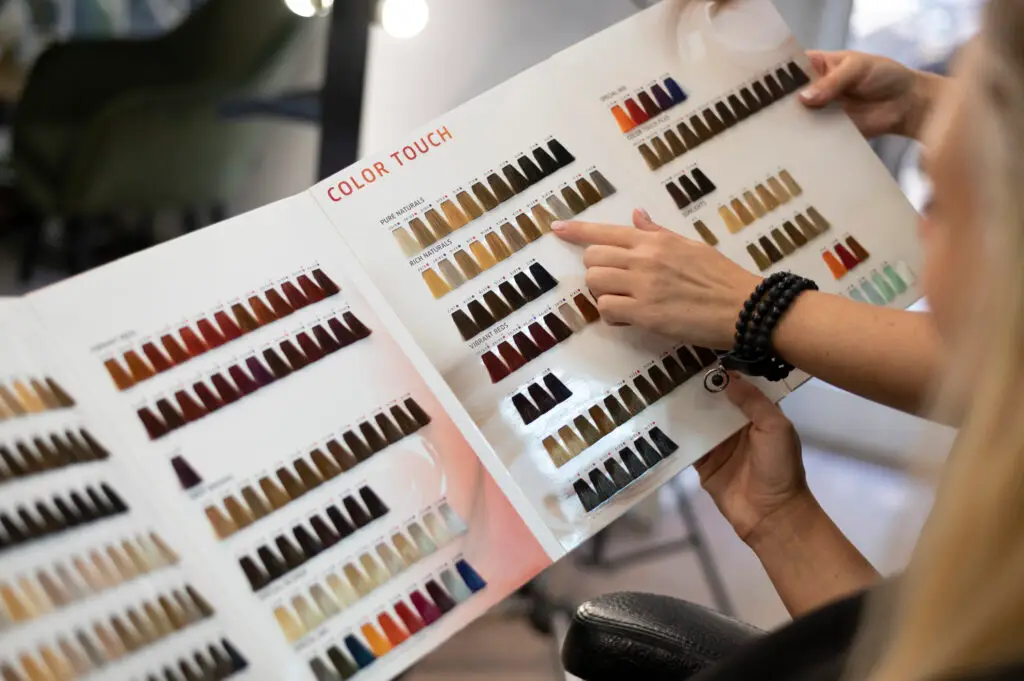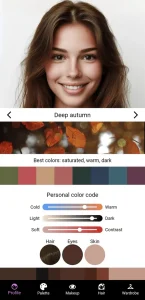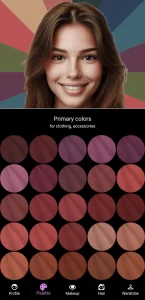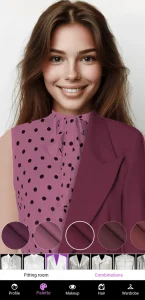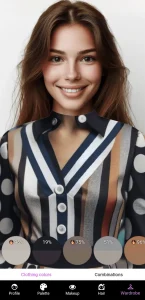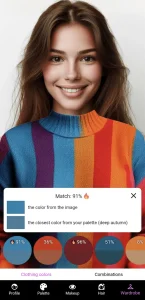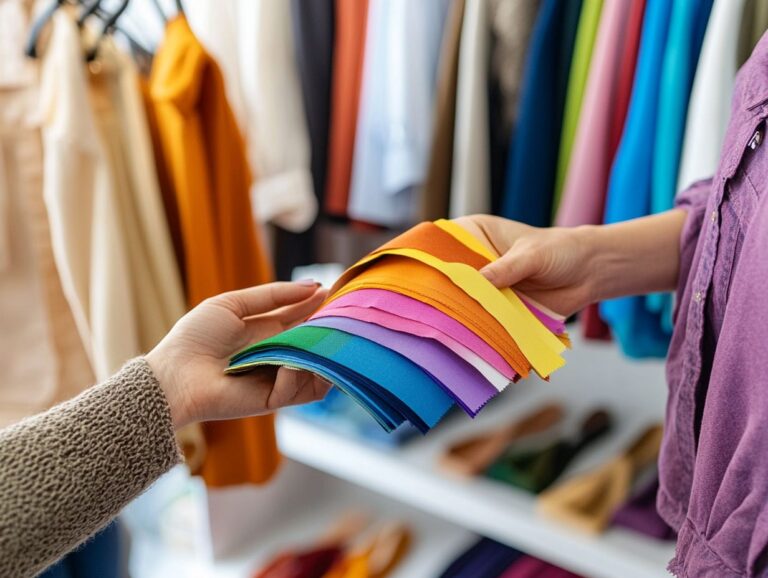Before digging into the world of hair color you need to know two fundamental concepts: pigments and undertones. These are the basics upon which you will select your ideal hair color, making sure that it complements your natural look rather than clashing with it. Human hair color is primarily based on two types of pigment: eumelanin (which can be black or brown) and pheomelanin (which provides reddish hues). The particular combination and concentration of these pigments in your hair will determine your natural hair color.
Understanding hair color basics: Pigments and undertones
Undertones play an essential role in choosing the right hair color. Every person’s skin has an undertone that is either cool, warm, or neutral. This soft color is different from your skin tone which we see on the surface and it influences very much which hair colors will look good on you. For example, if you have warm undertones, shades like golden blonde, rich auburn, or chestnut can be a great match for you. On the contrary, those with cool undertones might find that ash blonde, platinum, sapphire black, or cool browns boost their overall look a lot more.
When selecting your ideal hair shade, it is important to consider these undertones to avoid a mismatch that could lead you to unbearable disaster. A careful assessment of these facts not only makes the most of your appearance but also boosts your confidence, knowing your hair color is in perfect match for your natural palette. This knowledge empowers you to make informed decisions about dyeing your hair, making sure that you achieve the best possible results.
Assessing your natural skin tone and hair color
Being aware of your natural skin tone and hair color is key for selecting the ideal hair color that elevates your overall appearance. Start by using natural light to examine the veins at your wrist. If your veins appear blue or purple, you likely have a cool skin tone, while greenish veins indicate a warm skin tone. Those with blue-green veins might have a neutral skin tone, which combines well with most hair colors.
Another good technique is to consider your natural hair color in relation to your skin’s undertone. Cool undertones often work well with shades like cool blonde, jet black, or lighter ash brown, which complement the natural blush of your face. Warm undertones, on the other hand, are enriched by rich golds, warm browns, or fiery reds that give the golden touch to the skin. Select hair shade wisely, as the right color can dramatically boost your features, while the wrong one might make you look completely washed out.
When assessing your hair and skin, always consider the lighting, as artificial lights can change how colors appear. Remember, the goal is not just to choose a color that looks good on the shelf but one that will smoothly blend with your natural tones, providing a flawless look.
Top hair color shades: From warm to cool choices
In the amazing world of hair colors, you’ll find a great range of shades from warm to cool that can lighten up your appearance. The key to selecting the ideal hair color resides in understanding which shades best complement your natural undertones and personality. Let’s go through all the insights to help you choose the right shade and avoid unnecessary disappointments.
Warm shades are great for those with golden, peachy, or yellow undertones in their pigmentation. These colors, including golden blonde, rich chocolate browns, auburn red, and caramel highlights, can give you a glowing warmth to your skin tone . For a natural look, golden blondes and buttery shades can illuminate your face, while deeper shades like rich chocolate or auburn red can give you a vibrant, earthy look.
On the cooler side, if your skin has pink, red, or bluish undertones, you might want to select hair shades that neutralize rather than enhance these colors. Cool hair colors like platinum blonde, jet black, or ash brown can provide striking contrasts and bring out a fresh, radiant complexion. Platinum blonde is particularly effective for those seeking a bold transformation, as it can light up your entire face and draw attention to your features. Ash tones, whether blonde or brown, offer a subtle sophistication that pairs beautifully with cooler skin tones.
Remember, the ideal hair color should not just follow trends but resonate with your personal style and complexion. By choosing from the array of warm to cool hair shades, you ensure that your hair color is not only trendy but also timelessly flattering. Use AI tools like Color Analysis – Dressika app and its AI color analysis advanced techniques to ensure that you achieve the best results.
How to conduct a hair color test at home
Conducting a hair color test at home is a practical step to ensuring your ideal hair color suits you before committing fully. Start with choosing a small section of hair to color; this should be typically hidden under the top layers, perhaps near the nape of your neck. This positioning allows you to see the results without affecting your overall appearance, should the color not work out as expected. Use a temporary dye or a semi-permanent dye for this test, as these can wash out over time, reducing the risk of long-term dissatisfaction.
When selecting your test color, consider your natural undertones and how they might influence the results. For those looking to find their right hair shade, it’s crucial to consider how it complements your natural skin tone and eye color. Apply the dye according to the package instructions, ensuring even coverage on the chosen test strand. After processing, wash and dry the strand to assess the color in different lighting conditions—natural light will give you the most honest representation.
By testing colors at home, you can experiment with different shades without the commitment or cost of a salon visit, and more importantly, you can feel confident in your hair color choice. Still, if you are a bit scared of this whole process of trying hair dye on your own hair, remember that Color Analysis – Dressika app can help you by uploading your picture in the app and choosing different shades to see how it would look on you. Also do not forget that the goal is to enhance your natural beauty by selecting a hair shade that feels unique.
Maintaining your hair color: Tips and products
Maintaining your ideal hair color requires more than just an initial dye job; it’s about continuous care and choosing the right products to ensure that your select hair shade stays vibrant and healthy-looking over time. Here’s how to keep your hair looking its best:
- Invest in color-preserving hair care products: These shampoos, conditioners, and masks contain ingredients that help locking in the color while moisturizing and repairing damaged hair. Look for products that are free from sulfates and parabens, as these can damage your hair color quicker. .
- Consider incorporating a leave-in conditioner or hair serum into your routine: These not only help in detangling and smoothing your hair but also creates a barrier that minimizes color fading due to environmental factors like sun exposure and pollution.
- Limit the use of heat styling tools: which can definitely damage and fade colored hair. If you have to use these tools, always apply a heat protectant product beforehand, and that can minimize the amount of damage caused by high temperatures.
- Regular trims: These are another key aspect of maintaining your hair color and health. By snipping away split ends every 6-8 weeks, you help prevent breakage and keep your hair looking fresh and vibrant.
For those looking to maintain or find their ideal hair color, technology offers some smart solutions. Color Analysis AI – Dressika app gives users access to advanced color analysis tools for hair, helping you visualize how different shades might look on you. This tool simplifies the process of selecting the right hair shade without having to do all the hard work and makes sure that your color choice complements your overall style.

